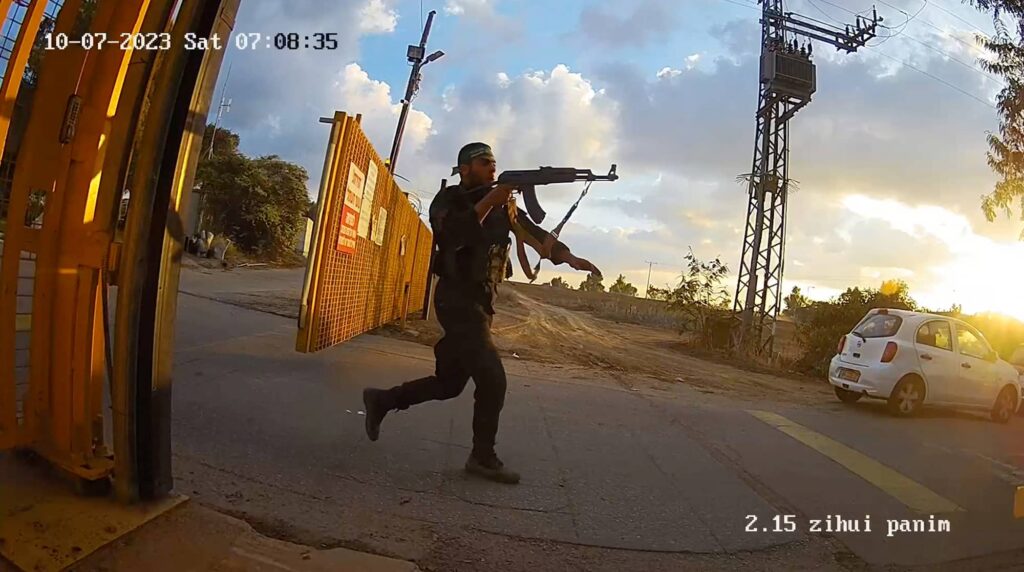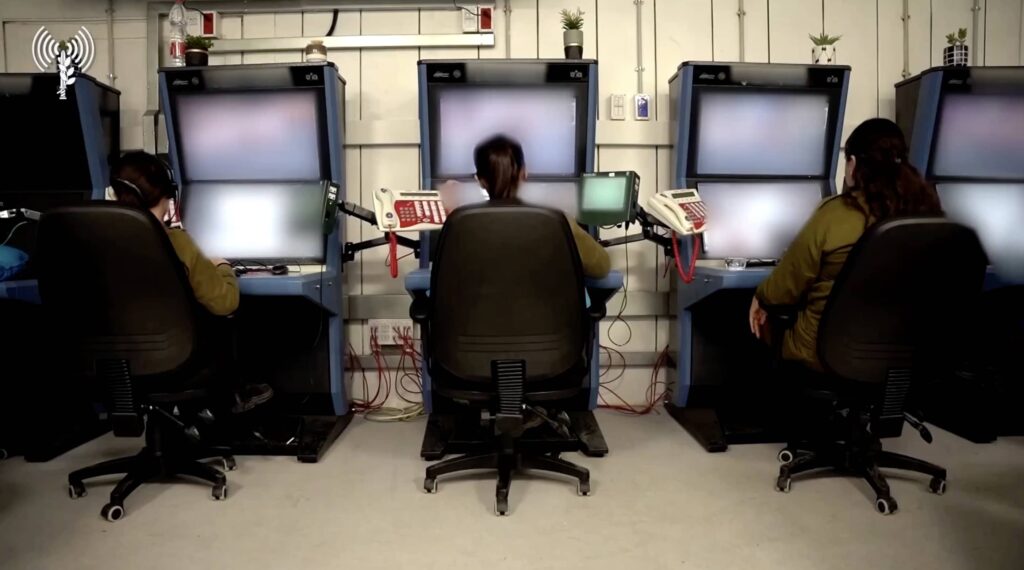Hamas’ sudden attack on the kibbutzim and the towns neighboring the Gaza Strip caught the IDF and the country by total surprise. During the first 24 hours, beginning at 6:30 in the morning of October 7, the Hamas Nukhba (name of the commando troops, means “elite”) and those who came in with them conquered and held an area of about 4-5 kilometers depth inside Israel, and in places penetrated well beyond that. The lack of any forewarning accounted also for the confused and disorganized, albeit often individually heroic, actions of the military and the police throughout the day.
What went wrong? How could Israel’s intelligence community have failed to “ring the bell”? To understand we have to analyze both the failure at the strategic level of analysis and the collapse at the tactical level of collection and detection.
The strategic level
Hamas’ leaders planned the attack over a long time and at an impressively high level of secrecy. We presume, based on what we know at this stage, that the planning for this operation began in 2021 and was carried out by Hamas leaders in Gaza Mohammed Deif and Yahya Sinwar with a small group of people. The planning was very detailed; each unit was assigned a specific mission with files prepared for each targeted community and military base.
While the Hamas units had no prior idea as to what their mission would be before the morning of the attack, they were trained on generic models of an Israeli kibbutz as well as on models of Israeli tanks, bases and other targets. They were also studying the points of penetration above ground, once the attack tunnels system (of which there were more than 30 in 2014) were put out of use. And yet these activities went on without setting off alarms on the Israeli side.
At the strategic level of analysis in the Israeli intelligence community, as well as among the political decision makers and the highest military echelon, a widely-held groupthink took hold: namely, that Hamas was adapting to the duties of governance. Thus, Israel was willing to make sure that the economic situation in the Gaza strip would improve – by allowing the monthly delivery of money from Qatar (in suitcases – since the Palestinian Authority blocked the use of the banking system for these transactions); and by allowing more people from Gaza to work in Israel. The governing assumption, which seemed to be confirmed by events, was that Hamas’ leadership would have no incentive to launch a new confrontation with Israel since it would continue to focus on improving the lives of Gaza residents.
Moreover, the prevailing belief was that the Hamas leadership was deterred from new attacks after suffering what the IDF claimed, perhaps too conveniently, were serious losses inflicted by the Israeli Air Force during the fighting in May 2021. This groupthink seemed to be reaffirmed when Hamas chose twice, in August 2022 and again in May 2023, to stay out of the fighting when the IDF attacked leaders of the Palestinian Islamic Jihad in Gaza, leading to short rounds of fighting. Hamas did not interfere, and Israel’s decision makers saw this as confirmation that Hamas was deterred and had no incentive to launch another major confrontation with Israel, at least for some years (given that seven years had passed between the fighting in 2014 and the Hamas rocket attacks in 2021).
Another aspect of the intelligence failure – which wove together the strategic level of analysis and the tactical level of collecting and assessing Hamas’ military capabilities – was the lack of knowledge and understanding of the remarkable improvement in Hamas’ ability to launch such an organized and coordinated attack, and the nature of the simple but effective devices it acquired – with help from Iran – in order to overcome Israel’s defenses.

The tactical level
To understand this failure it is necessary to revisit Israel’s growing tendency to rely on its well-established technological advantages. The surveillance system deployed along the border was based on a range of remote-controlled sensors – ground radars, cameras, and so-called “see and shoot” systems – which gathered the information and transmitted it backwards to a control room manned by young and skilled soldiers, often female. Each one of them was an expert on the territory on which she was focused.
Some of these soldiers sense that what was happening was unusual, watching Hamas activists training on Israeli models. They reported to their commanders: but the latter, until very late in the day, did not pay much attention to these reports, since the belief was “Hamas is deterred.” (On October 6, there was a sense at the high command and in the Shin Bet, Israel’s internal security service, that something was up, but very limited actions were taken and there was no expectation of an early morning attack the next day).
Moreover, the sensors deployed along the border lines were well recognized by Hamas’ intelligence gathering, and since they were remote-controlled they were very vulnerable to attack by relatively simple means, such as explosive devices or hand grenades dropped from small drones. The IDF’s Gaza Division, deployed along the border, relied also on the complex obstacles built all around Gaza Strip border and considered it to be impassable. With three of the observation balloons down for a variety of reasons, the IDF was all the more easy to blind on the day of the attack.

The Attack
Hamas gathered information over a long time. They knew exactly which sensors were observing which areas. They followed the IDF’s units’ reactions to specific provocations – how long it took to reinforce the area, on what roads reinforcements were moving, and other relevant patterns of deployment. They learned, through workers from Gaza who collected such information for them, about possible points of entry to military bases and civilian communities.
On October 7, early in the morning, the Nukhba of Hamas were called and briefed on their real missions. Each unit was equipped with a large amount of weapon systems and ammunition, food and water that were meant to enable them to stay inside Israel for a long time. At the opening phase they neutralized the communication systems connecting the sensors to the control center by using drones that attacked the surveillance posts with hand grenades and bombs. The control centers were blinded and could not tell where the breaks through the physical obstacle were taking place. In order to isolate the area and prevent reserve units from getting there, they landed activists using paragliders that set blockades on the main roads leading to the area.
The Hamas troops then broke into the Gaza Division Headquarters, close to the border, and cut off all communications from there. The Division commander, besieged within the base (with his family), could not communicate with other units, nor with his superiors (or with Air Force assets). Thus the higher echelons – the Southern Region Command HQ in Beersheva and the GHQ in Tel Aviv – were not at first fully aware of the extent of the attack and were relying on civilian calls for help to understand where the Hamas invaders were carrying out their bloody massacres.

Conclusions
Since the groupthink about Hamas being deterred prevailed at the higher echelons, the operational and tactical levels were also under that impression. They relied too much on the technology – the huge and sophisticated barrier, which cost 3 billion shekels (about 850 million dollars) to build, the surveillance systems and remote-controlled fire centers. At worst, they assumed that a few Hamas activists, at most, would try to cross the border and abduct a soldier or a resident to negotiate the release of people imprisoned in Israel (as happened in 2006 in the case of the soldier Gilad Shalit). The assumption was that if that were to happen, they would receive ample early warning sufficient to thwart such an attack.
Nobody within the Israeli intelligence community had the imagination to believe Hamas would be able to carry out such a complicated and coordinated attack and to succeed in killing so many people and abducting 240 hostages, carrying them to Gaza. If at all, such plans and capabilities were ascribed to the Radwan Force – Hizbullah’s equivalent (and role model) of Hamas’ Nukhba. IDF training exercises did have such Hizbullah scenarios. But the notion that Hamas would be capable of carrying out a massive attack was not given serious consideration.
The intelligence failure of October 7, 2023 had a predecessor 50 years and one day earlier, on October 6, 1973, when Egypt and Syria launched a surprise attack. Both failures can be traced to Israel’s penchant for groupthink.
- In the groupthink assumptions of 1973, the military command firmly believed and asserted that the Egyptian Army would not launch a war with Israel before 1975, as long as they were not equipped with attack aircraft and missiles that would enable them to hit targets In Israel. This assumption was not updated by new information, as detailed in Amir Oren’s description of the 1973 intelligence failure in these pages. In 2023, the groupthink assumption was that Hamas was deterred and had no incentive to launch a large confrontation with Israel.
- Strategic level groupthink in both cases caused the military command to ignore warning signs at the tactical levels. In 1973 observation teams deployed along the Suez Canal reported irregular activities of the Egyptian forces on the west bank of Suez Canal, but these reports were rejected at the Southern Region Command’s Intelligence Department as well as at the Research and analysis division of military intelligence HQ in Tel Aviv. They were explained away as related to a planned large-scale drill of the Egyptian Army. Likewise, in 2023, the young women soldiers at the observation centers reported Hamas’ intensified training on the models of an Israeli kibbutz and an Israeli tank. There were also reports of individual operators at 8200, Israel’s signal intelligence unit, who raised similar indicators and were similarly ignored.
Israel’s intelligence technologies and overall capabilities have improved enormously in the 50 years since Yom Kippur 1973. But the intellectual failure in both cases was similar. The results this time were in many ways more tragic than those of the Yom Kippur War.

